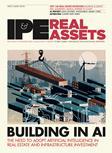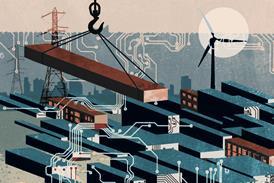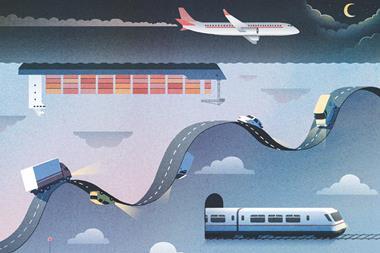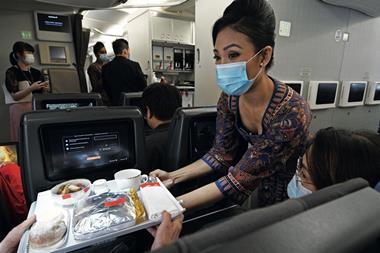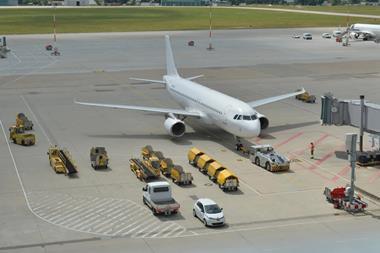
The inflationary cycle continues to weigh on the economic recovery and hamper the restoring process at all levels and in all sectors. Despite this unpromising situation, marked by a post-Covid recovery that is still very weak and a long-lasting war between Russia and Ukraine, the aircraft leasing industry continues to perform well.
The causes of inflation
The war in Ukraine has brought geopolitical uncertainty, spurring a spike in prices of everything from materials to energy to food. Western countries have imposed crippling sanctions on Russia’s economy and restricted the use of its oil. Russia is the world’s largest oil and natural-gas exporter and the second-largest crude-oil exporter globally after Saudi Arabia, meaning that the sanctions have roiled energy markets. Ukraine, meanwhile, is often called ‘the breadbasket of Europe’ due to its high wheat and grain exports. The conflict has sharply curtailed those exports, pushing up prices of grains and food products as a result.
The forces of inflation, however, went into motion before the conflict started in February this year. As the pandemic took root in early 2021, pent-up demand for goods clashed with stock and staff shortages, driving up prices in economies around the world, both advanced and developing.
The challenges for aviation
Inflationary pressures have led to a challenging environment for all industries, including aviation. The ripple effects are multi-fold, from labour shortages to high debt levels.
- Staffing shortages: Many airlines have seen staff shortages in recent months. Some of the reasons for this are strikes, leading to personnel shortages and mass cancellations of flights. These cancellations push up the demand to fly on other flights, which in turn increases the price.
- Longer routes: The war in Ukraine is also causing many airlines flying to and from Asia to divert their routes around Russia, Belarus and Ukraine, which often makes them longer and therefore costlier.
- Higher airfares: Labour shortages and higher oil prices are among the factors prompting carriers to boost airfares. This could threaten the business models of some low-cost carriers since discretionary spending by some consumers will be squeezed until inflation and airfares are reduced. Airfares charged by low-cost carriers will also increase as airlines cut back capacity. If prices pass a certain level, customers may not believe that the model is attractive for a stripped-back service with reduced seat space and food that is not included in the ticket price.
- High debt levels: Separately, some airlines took on significant debt during the pandemic and now must deal with rising operating costs. However, inflation helps those with debt because it reduces its real value and hence the real value paid back. Nominal interest rates should remain below the rate of inflation, which should give airlines the opportunity to pay back their debts at a lower cost. Airlines that have high debt levels and do not have the liquidity to pay it back may experience significant challenges and may have to retrench unless they are able to get state support. Since governments provided ample support during the pandemic, patience to continue doing so is wearing thin.
Furthermore, many aircraft purchase agreements and leases will have price escalation terms – namely, lease rates rising as they are linked to the purchase price of the aircraft which is escalated in line with inflation – the price of the aircraft goes up if a manufacturer’s costs to produce it go up. Furthermore, base rates and reference rates are increasing which will make it more expensive for airlines and lessors to raise capital.
- Delayed deliveries: The swift economic reopening caught everyone off guard and, along with supply chain issues, it is the main reason why deliveries for new aircraft are late for all manufacturers. Less control and difficult planning on deliveries. Raw materials are not currently a big issue for this year as original equipment manufacturers (OEMs) generally plan a year ahead to avoid any work stoppage, but price escalation will certainly have a negative impact as OEMs will deliver less aircraft than planned this year.
- Reactivating older aircraft: Another effect of the rapid economic reopening is the surge in demand and the lack of aircraft capacity, forcing airlines worldwide to reactivate aircraft that initially were expected to go for end of life.
The positives for aviation
Despite these pressures, we believe that a sector such as aircraft leasing will have every opportunity to benefit from such a context. Certainly, the airline industry is being affected by the general rise in airfares, which is likely to dampen demand and slow the industry’s recovery. However, real assets, such as aircraft, will be less affected by inflation as they are able to generate attractive return premiums.
Not only is inflation likely to help offset the decline in resale value of lessor-owned aircraft over time, but ownership of an aircraft is also likely to generate rental income until it is resold.
Real assets, such as aircraft, are far from suffering from inflationary shocks: and for good reason, these assets are still able to generate yield premiums in case of resale or fleet modification.
Indeed, inflation causes aircraft prices to rise over time, including the value of an aircraft as it ages, which can help offset the depreciation in their value. In the extreme, the value of an aircraft will depreciate more slowly than it would in the absence of inflation. At the best of all scenarios, it may allow the aircraft to be sold at a higher value than its original one.
Even better, owning an aircraft gives you the opportunity to continue to benefit from the rental income it generates until it is resold.
The outlook
Inflation will lead to increased costs for many airlines that may try and pass these costs on to customers through rising airfares. However, the industry can continue to rebound if airlines are consumer-centric.
In a high inflationary environment, airlines must be able to toe the fine line between recovering and achieving post-pandemic profits, which in some cases will mean charging more without choking demand to propel the rebound.
The aircraft leasing industry has enough flexibility to withstand inflation. It should be reminded that, when operational leasing of aircraft was introduced in the late 1970s and early 1980s, aircraft were a huge cover against inflation.
At times, aircraft were even sold at the end of their 10-year lease at a higher price than when they were newly purchased due to inflation. The fact that aviation was seen as a hedge against inflation was a major factor in the aircraft leasing boom of the 1980s. Back then, investors were lining up to enter the market.
It is clear that today’s transportation companies need a more agile and dynamic approach to financing and optimising fleets. Airlines require innovative solutions – ones that provide them with optimal agility in dealing with the challenging inflationary cycle that is affecting the entire world. These solutions, coupled with solid fundamentals, have the airline industry well positioned for the coming years.

